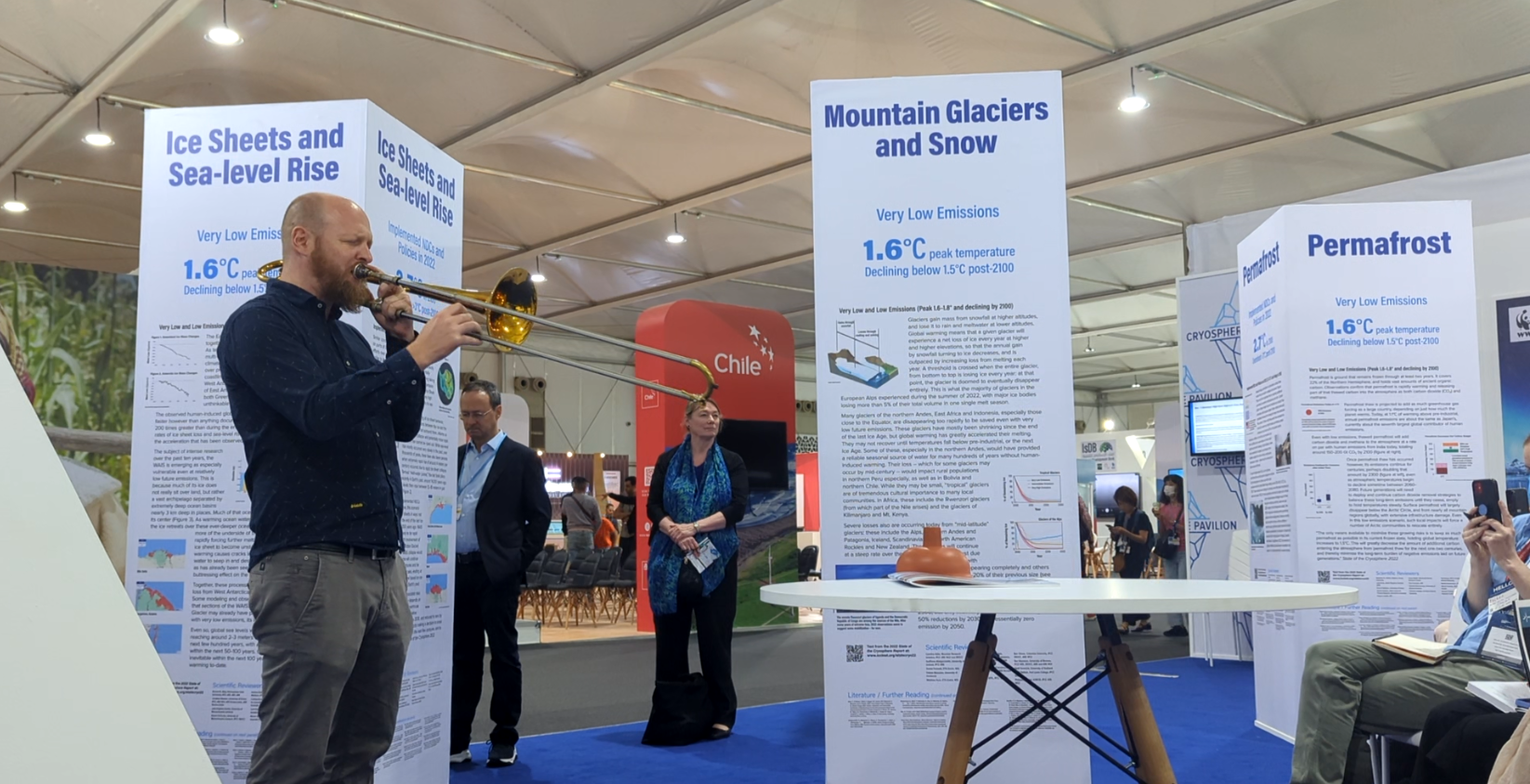In November I attended the 27th Climate COP with the International Cryosphere Climate Initiative (the ICCI) in Sharm el-Sheikh, Egypt. I was there for eleven days to give talks and offer context on sea ice change during panels and discussion sessions. In particular, I was privileged to speak alongside representatives from NGOs such as the Inuit Circumpolar Council and the Clean Arctic Alliance. I also supported the media launch of the State of the Cryosphere 2022 report, which is compiled by the ICCI.
This year’s COP was a challenge compared to last year’s, which I attended in Glasgow. The war in Ukraine has radically redistributed the pressure on energy, at least in Europe. The oncoming recession in many developed countries also seemed to affect their ambition on the climate transition. Finally, the head of steam that has built up in recent years behind establishing a Loss and Damage fund seemed to suck a lot of energy out of mitigation ambition.
Composer and trombonist Simon Petermann performing in front of the Cryosphere Pavilion’s pillars, as part of a broader piece on glacier loss “Waking the Giants”.
The publication of the Global Carbon Budget 2022 during the conference also felt like a blow to ambition, showing that global CO2 emissions from fossil fuels hit record highs this year. Although “total” emissions remain slightly below the record level set in 2019, this is by dint of land use changes that are probably outside of our control at present. A couple of people approached me at COP citing previous emissions “deadlines” that we have now missed in light of the 2022 budget. Some wanted to conclude that we’re all screwed and should use this as an excuse to give up on the 1.5°C target. Others thought it undermined our messaging that 1.5°C was still geophysically attainable. A third group wanted us to set a new, even more urgent deadline! I wrote a correspondence piece to Nature about this issue, which just came out.
The Cryosphere Pavilion (organised by the ICCI) traditionally has literal “pillars” of the cryosphere, carrying information on systems like permafrost, mountain glaciers, polar ice sheets and Arctic sea ice. Based on this year’s State of the Cryosphere Report, we toppled the Arctic sea ice pillar to recognise the fact that the Arctic Ocean is almost certain to be sea ice free at least once before the end of the century. Early in the conference I spoke at a “dedication” ceremony for the toppled pillar.
Me speaking at the dedication ceremony for the toppled Arctic sea ice pillar (visible on the right).
Finally, the ICCI successfully coordinated the formation of “Ambition on Melting ice”. This is a multinational coalition of 18 countries which aims to bring attention to the special role of the cryosphere in global change. In particular, its aim was to emphasise the near-universal exposure of countries to cryospheric change via sea level rise. In its declaration, the founding governments made clear that the Paris 1.5°C target is essential for the cryosphere, and as such pre-2030 emissions are imperative.
Because of the advocacy above, the cryosphere was mentioned for the first time in a COP cover agreement, in Section 1: “Science and urgency”. In particular, the Parties now formally recognise “the impact of climate change on the cryosphere and the need for further understanding of these impacts, including tipping points”. Recognition from the Parties that our work is important is a big deal for my field, and for me personally! So congratulations and thanks to the ICCI and all those who lobbied for my favourite earth system at COP27.
Excerpt from the “Sharm el-Sheikh Implementation Plan”, also known as the COP cover agreement. It mentions the cryosphere and tipping points for the first time.


